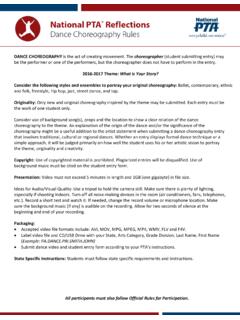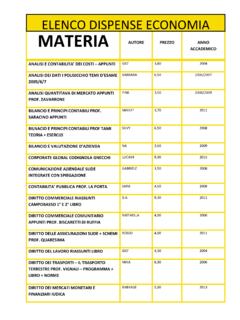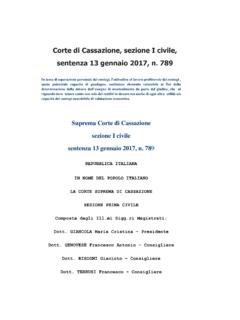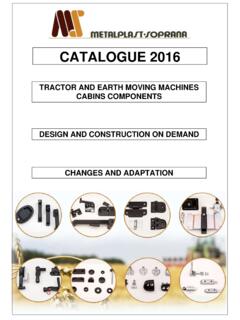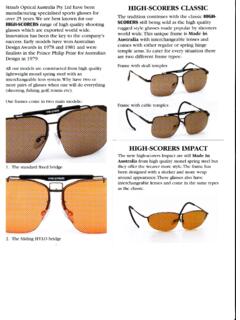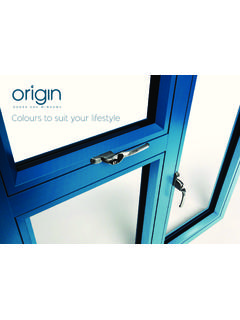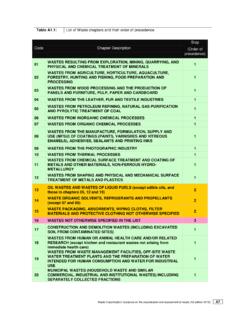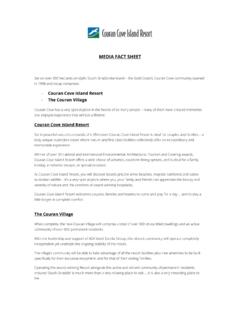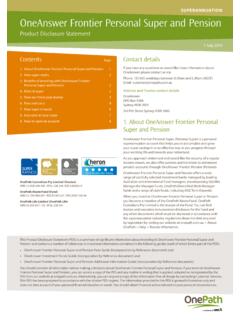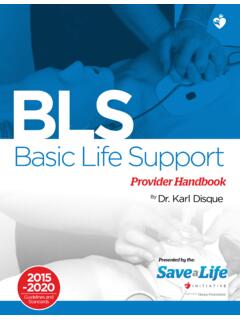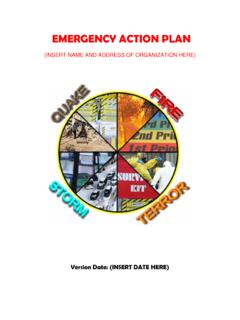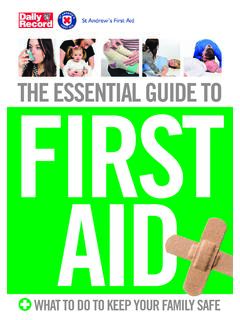Transcription of Basic Life Support
1 National Health Care Provider SolutionsBasic Life SupportProvider handbookDownload free books at2 National Health Care Provider SolutionsBasic Life Support Provider HandbookDownload free eBooks at Basic Life Support : Provider Handbook1st edition 2016 National Health Care Provider Solutions & 978-87-403-1265-2 Download free eBooks at life support4 ContentsContents1 General concepts of Basic life Support Initiating the chain of survival 2010 BLS guidelines changes 82 BLS for adults One-rescuer adult BLS/CPR Two-rescuer adult BLS/CPR Adult mouth-to-mask ventilation Adult bag-mask ventilation in two-rescuer CPR Adult BLS algorithm Self assessment 17 Download free eBooks at on the ad to read more Deloitte & Touche LLP and affiliated the truth at Deloitte & Touche LLP and affiliated the truth at Deloitte & Touche LLP and affiliated the truth at Deloitte & Touche LLP and affiliated the truth at Basic life
2 Support5 Contents3 Use of the automated external defibrillator (AED) Self assessment 234 BLS for children (age 1 to 8 years old) One-rescuer BLS for children Two-rescuer BLS for children 265 BLS for infants (0 to 12 months old) One-rescuer BLS for infants Two-rescuer BLS for infants 316 automated external defibrillator infants & children Self Assessment 367 Airway management Mouth-to-mouth rescue breathing Rescue breathing 42 Download free eBooks at on the ad to read moreClick on the ad to read moreTMP PRODUCTIONNY026057 BPSTANKIEgl/rv/rv/bafACCCTR0005 Bookboon Ad Creative46 x 412/13/2013 Bring your talent and passion to aglobal organization at the forefront ofbusiness, technology and how great you can be. Visit 2013 Accenture.
3 All rights life support6 Contents8 Relief of choking Choking in an adult or child older than one year Choking in infants (less than one year old) 45 Additional NHCPS tools 50 Review questions 52 Notes 55 Endnotes 56 Download free eBooks at on the ad to read moreClick on the ad to read moreClick on the ad to read moreUnlock your potentialeLibrary solutions from bookboon is the keyInterested in how we can help you? email Basic life support7 General concepts of Basic life support1 General concepts of Basic life supportThe American Heart Association (AHA) has updated the Basic Life Support (BLS) course over the years as new research in cardiac care has become available.
4 Cardiac arrest continues to be a leading cause of death in the United States. Life Support guidelines have changed dramatically, and the elements of BLS continue to be some of the most important steps in initial treatment. Basic Life Support includes: Quickly starting the Chain of Survival Delivering high quality chest compressions for adults, children and infants Knowing where to locate and understanding how to use an Automatic external defibrillator (AED) Providing rescue breathing when appropriate Understanding how to perform as a team Knowing how to treat Initiating the chain of survivalEarly initiation of BLS has been shown to increase the probability of survival for a victim of cardiac arrest. To increase the odds of surviving a cardiac event, the rescuer should follow the steps in the Adult Chain of Survival.
5 ADVANCED Figure 1: Adult chain of survivalDownload free eBooks at life support8 General concepts of Basic life supportInfants and children do not usually have primary cardiac events. Pediatric patients will most often suffer from respiratory events or dehydration that lead to cardiac arrest. The most important part of the Pediatric Chain of Survival is the first link Prevention. ADVANCED Figure 2: Pediatric chain of 2010 BLS guidelines changesIn 2010, the American Heart Association (AHA) released a revision of the BLS Guidelines. Approximately every five years the AHA updates the guidelines for Cardiopulmonary Resuscitation (CPR) and Emergency Cardiovascular Care (ECC). The content contained herein is based on the most recent AHA publications on BLS and will periodically compare old versus new recommendations for a comprehensive changes include: Previously, the initial steps were A-B-C (Airway, Breathing, Compressions).
6 The literature indicates that starting compressions early in the process will increase survival rates. Therefore, the steps have been changed to C-A-B (Compressions, Airway, Breathing). This is intended to encourage early CPR and avoid bystanders interpreting agonal breathing as signs of life and withholding CPR. Look, listen and feel for breathing is no longer recommended. Instead of assessing the victim s breathing, begin CPR if the victim is not breathing (or is only gasping for breath), has no pulse (or if you are unsure), or if the victim is unresponsive. Do not perform an initial assessment of respirations. The goal is early delivery of chest compressions to cardiac arrest free eBooks at life support9 General concepts of Basic life Support High-quality CPR is key and is defined as: -Compression rate of AT LEAST 100 per minute for all victims -Compression depth of AT LEAST 2 inches for adults/children and about inches for infants -Allow complete chest recoil after each compression -Minimize interruptions in CPR except to use an AED or change rescuer positions -Do NOT over-ventilate -Provide CPR as a team when possible Cricoid pressure is NO longer routinely performed.
7 Pulse checks are shorter feel for a pulse for 10 seconds then begin compressions if a pulse is absent or if you are not sure you feel a pulse. Even trained clinicians cannot always reliably tell if they can feel a pulse. For infants, use a manual defibrillator if one is available. If one is NOT available, an AED with pediatric dose attenuator should be used for an infant. If an AED with dose attenuator is not available, you may use an adult AED even for an free eBooks at life support10 BLS for adults2 BLS for adultsThe Basic Life Support (BLS) course for adults focuses on doing several tasks simultaneously. In previous versions of BLS, the focus was primarily on one-rescuer CPR. With the 2010 guideline update, it is recognized that more than one person is typically available to do CPR.
8 However, all rescuers should know how to do both one and two-person resuscitation. This includes chest compressions, establishing an airway, breathing for the victim, and defibrillation when an AED machine is available. It is critical to know the steps in Adult adult BLS algorithmMONITOR RHYTHM/ SHOCK IF NEEDED REPEAT AFTER 2 MINGET AED & START CPRPUSH HARD AND FASTACTIVATEEMERGENCYRESPONSEUNRESPONSIV E:NO BREATHING ORONLY GASPINGD ownload free eBooks at life support11 BLS for One-rescuer adult BLS/CPRBE SAFEASSESS THE VICTIMCALL EMSCPRDEFIBRILLATE Steps for CPR1. Check for the carotid pulse on the side of the neck. Remember not to waste time trying to feel for a pulse; feel for NO MORE THAN 10 seconds. If you are not sure you feel a pulse, begin CPR with a cycle of 30 chest compressions and two breaths.
9 (Fig. 1)i Fig. 12. Use the heel of one hand on the lower half of the sternum in the middle of the chest. (Fig. 2) Fig. 2 Download free eBooks at life support12 BLS for adults3. Put your other hand on top of the first hand. (Fig. 3) Fig. 34. Straighten your arms and press straight down. Compressions should be AT LEAST two inches into the victim s chest and at a rate of AT LEAST 100 per minute. (Fig. 4) Fig. 4 Download free eBooks at on the ad to read moreClick on the ad to read moreClick on the ad to read moreClick on the ad to read us on IE MIM Profile55 Nationalitiesin class5 SpecializationsPersonalize your program MASTER IN MANAGEMENTL ength: 1O MONTHSAv. Experience: 1 YEARL anguage: ENGLISH / SPANISH Format: FULL-TIMEI ntakes: SEPT / FEB STUDY IN THE CENTER OF MADRID AND TAKE ADVANTAGE OF THE UNIQUE OPPORTUNITIES THAT THE CAPITAL OF SPAIN OFFERS PROPEL YOUR EDUCATION BY EARNING A DOUBLE DEGREE THAT BEST SUITS YOUR PROFESSIONAL GOALS STUDY A SEMESTER ABROAD AND BECOME A GLOBAL CITIZEN WITH THE BEYOND BORDERS EXPERIENCECHARLESFINANCIAL SERVICESMARIACONSULTINGMATTHEWMANUFACTUR INGSARAHRETAILNICKTECHNOLOGYAFTER GRADUATION, MIM STUDENTS WORK IN A VARIETY OF 1 30/11/16 12:23 Basic life support13 BLS for adults5.
10 Stop pressing and let the chest expand after each compression this will allow blood to return back into the After 30 compressions, stop compressions and open the airway by tilting the head and lifting the chin. (Fig. 5A & B)a) Put your hand on the victim s forehead and tilt the head back. Fig. 5Ab) Lift the victim s jaw by placing your index and middle fingers on the lower jaw; lift 5Bc) Do not perform head tilt/chin lift if you suspect the victim may have a neck Give a breath while watching the chest rise. Repeat while giving a second breath. Breaths should be delivered over 1 Resume chest Two-rescuer adult BLS/CPRMany times there will be a second person available that can act as a second team member. Send this person to call EMS and find an AED while you begin CPR.
